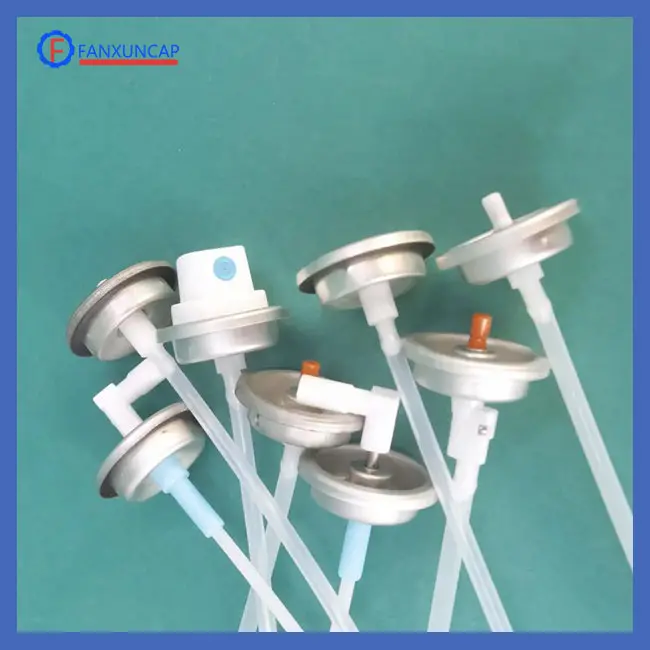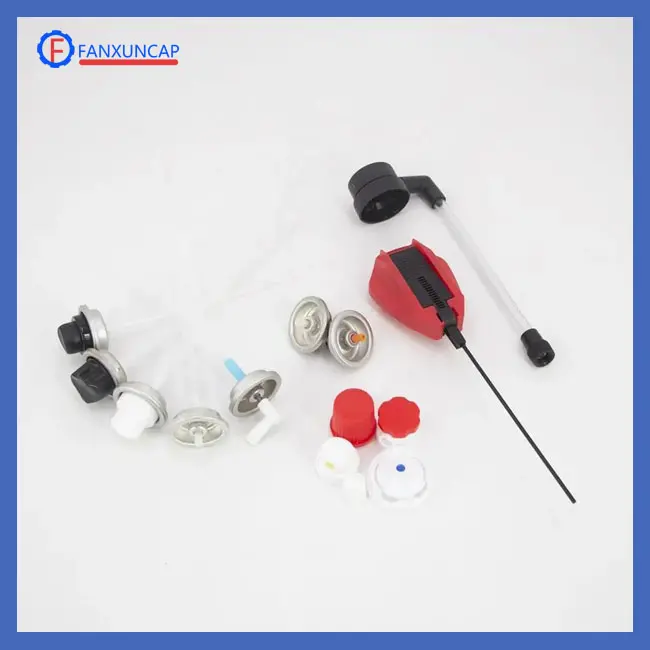An aerosol can, also known as a spray can, is a pressurized container used to store and dispense various products in aerosol spray form. Used in a variety of industries, this product consists of a metal or aluminum can, valve system, propellant and the product itself. Next we will take you to learn more about this product
What is an aerosol can
An aerosol can is a pressure container used to store and spray various products, usually made of metal or aluminum. An aerosol can usually consists of a tank body, a valve system, a propellant, and the product itself, and is used to deliver the product in an aerosol spray. Here are the main components and working principles of an aerosol can:

- Tank body: latas de aerosol are usually made of metal, such as steel or aluminum, and are used to withstand high pressure. It is used to store the product to be sprayed.
- Valve system: The valve system is a mechanism that controls the release of products in the form of aerosol, and includes the following key components:
- Actuator: The actuator is located on top of the valve and usually has a button or nozzle that releases the product when the user presses the actuator.
- Dip Tube: The dip tube extends into the product inside the tank and draws out liquid or propellant when the user presses the activator.
- Valve Stem: The valve stem controls the flow of product and is depressed when the actuator is depressed.
- Gasket: Gasket ensures sealing and prevents leakage.
- Valve Housing: This part surrounds the other valve components and connects the valve to the tank.


- Propellant: Aerosol cans contain propellant, usually compressed gas or volatile liquid, such as propane, butane or dimethyl ether. The propellant creates pressure inside the tank, and when the valve opens, the propellant sprays out the product, creating an aerosol effect.
- Products: There are many types of products, including paints, lubricants, cleaning fluids, insecticides, deodorants, aerosoles, etc., usually in liquid or semi-liquid form.
When the user presses the activator, it depresses the valve stem, allowing the propellant to expand, pushing the product to be released in a fine spray or mist. This process creates an aerosol effect.
latas de aerosol are extremely popular because they provide a convenient and controlled way to apply a variety of products, such as paints, lubricants, and personal care products. They are widely used in various industries, including automotive, home, beauty, and more.
What materials are aerosol cans made of?
- Metal: Traditional latas de aerosol are usually made of metal, such as steel or aluminum. These metal materials have good pressure resistance and can withstand high pressure, so they are often used to package liquid or gas products. Aluminum aerosol cans are lighter, corrosion-resistant and suitable for food, pharmaceutical and personal care products, while steel aerosol cans are generally stronger and suitable for industrial and painting applications.
- Plastic: Some aerosol cans use plastic materials, such as polyethylene (PE), polypropylene (PP) or polyvinyl chloride (PVC). Plastic aerosol cans are typically used for low-pressure or applications that don’t require high intensity, such as spraying household cleaning products, sunscreen, or hair spray. They are generally lighter, less expensive, and available in disposable or portable products.
- Glass: Some aerosol cans use glass materials, which are usually used to package high-end perfumes, cosmetics or certain drugs. Glass aerosol cans maintain the purity of the product without compromising it, but due to their fragility they are usually used for high-value products.
- Composite materials: Some aerosol cans are made of composite materials, usually composed of a combination of materials to achieve a balance of strength, pressure resistance and portability. Composite aerosol cans can be used in a variety of applications, with the appropriate combination of composites selected for specific needs.
The choice of materials usually depends on the nature of the product, the environment in which it will be used, safety requirements, and manufacturing costs. Different materials have different properties and benefits, and manufacturers choose the appropriate materials based on the specific needs of their products. Además, environmental protection and recyclability are also factors that need to be considered when selecting materials, especially in today’s sustainable development environment.
Application industries of aerosol cans
Different types of aerosol cans play an important role in different industries, providing convenient ways to apply and distribute products. The wide range of uses of aerosol cans makes them an important packaging and distribution tool in multiple industries. Here are some common industries that use this product:
Personal care and beauty industry:
- Perfume, body spray
- Hairspray, hair wax, styling spray
- Cosmetic spray, makeup spray
- Sunscreen spray, self-tanning lotion
Home Cleaning and Maintenance:
- Air freshener: used to improve indoor air quality.
- Kitchen and Bathroom Cleaner: For cleaning surfaces.
- Dishwasher detergent: Used to maintain your dishwasher.
Industry and Manufacturing:
- Coating: Used in spray paints and preservatives in industrial and manufacturing processes.
- Lubricant: used for lubrication of mechanical parts.
- Cleaning agents: used to clean industrial equipment and components.
Food and Beverage Industry:
- Cooking Oil Spray: Used in cooking and baking to lubricate pots and food surfaces.
- Food preservatives: used to preserve food.
- Cooking Spray: Used to lubricate food and add flavor.
The wide range of uses of aerosol cans makes them an important packaging and distribution tool in multiple industries. Manufacturers and users need to choose the appropriate type of aerosol can according to the characteristics and needs of the product, while complying with relevant regulations and environmental protection requirements.
Advantages and Disadvantages of Aerosol Cans
latas de aerosol, as a container and spray device, have various advantages and disadvantages depending on the application and use situation. Here are some of the main advantages and disadvantages of aerosol cans:
advantage:
- Cómodo de usar: The aerosol can is very convenient, the user only needs to press the activator button or nozzle to easily release the product, without the need for additional tools or equipment.
- Uniform spray: The aerosol can can produce fine mist spray, which can evenly distribute the product on the target surface, reducing waste and uneven coating.
- Precise control: Users can easily control the amount of product and make fine adjustments as needed to achieve precise coating.
- Good sealing: Aerosol cans usually have good sealing, which can maintain the freshness and effectiveness of the product and prevent the entry of oxygen and moisture.
- Anti-corrosion: For liquid or semi-liquid products, aerosol cans can provide protection from contamination or corrosion.
- Lightweight and portable: Aerosol cans are generally lightweight and portable, making them suitable for a variety of applications, including travel, outdoor activities, and emergency situations.
- Various applications: latas de aerosol can be used in a variety of products, including personal care, medicine, household cleaning, lubrication, productos cosméticos, painting, food and other fields.
shortcoming:
- Pressure: The pressure in latas de aerosol may cause safety issues and may cause accidents if not used correctly, heated, or exposed to high temperatures.
- Environmental protection: The propellant in the aerosol can may contain fluorocarbons or other environmentally harmful substances, which can cause damage to the atmosphere. Por lo tanto, they need to be handled and recycled with care.
- Recyclability: Processing and recycling aerosol cans can be relatively complex because they are often composed of a variety of materials, such as metal, plastic, and glass.
- Overspray: Sometimes users may accidentally overspray, resulting in wasted product.
- Seguridad: Aerosol cans may be abused in inappropriate situations, such as for illegal purposes, such as inhalation abuse.
Taken together, latas de aerosol are a versatile and convenient product packaging and spraying tool, but they need to be used and handled properly to fully realize their advantages and avoid potential disadvantages. Relevant safety and environmental guidelines should be followed when using to ensure safe use and disposal of aerosol cans.
Summarize
Aerosol cans are popular because they offer a convenient and controlled way to apply various products, such as paints, lubricants, and personal care items. They are widely used in various industries, including automotive, household, beauty, and more. Proper usage and disposal of aerosol cans are important for safety and environmental considerations.
